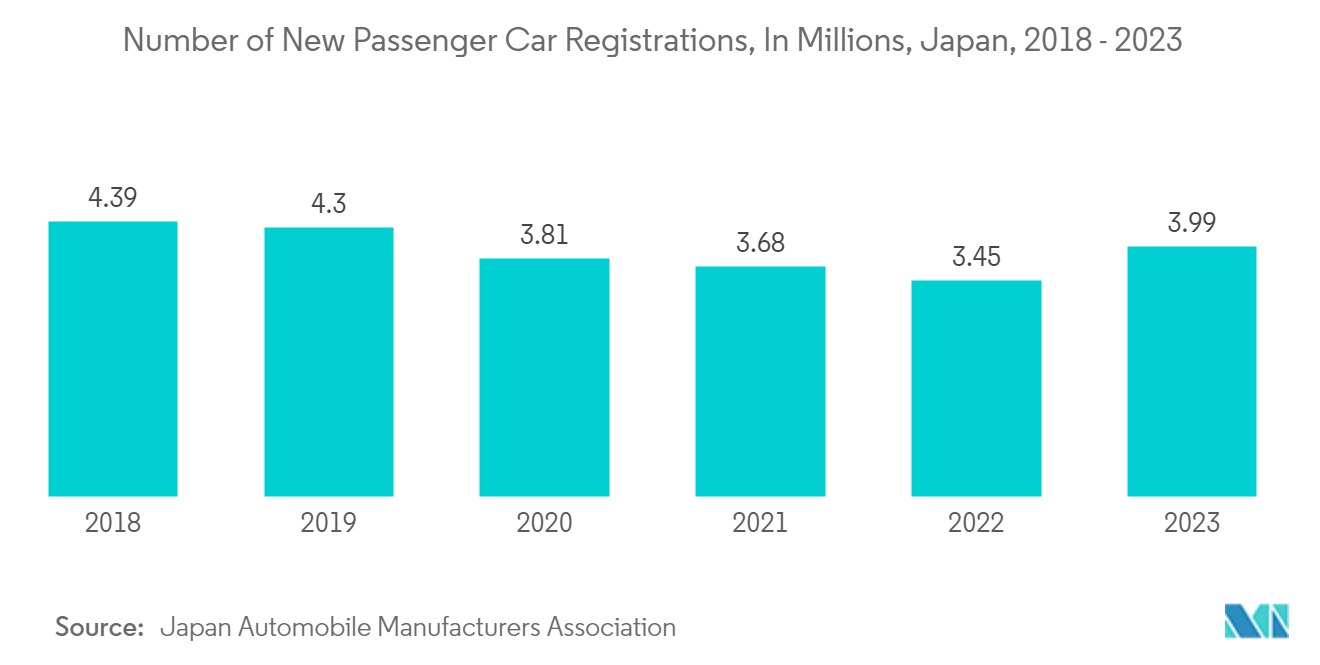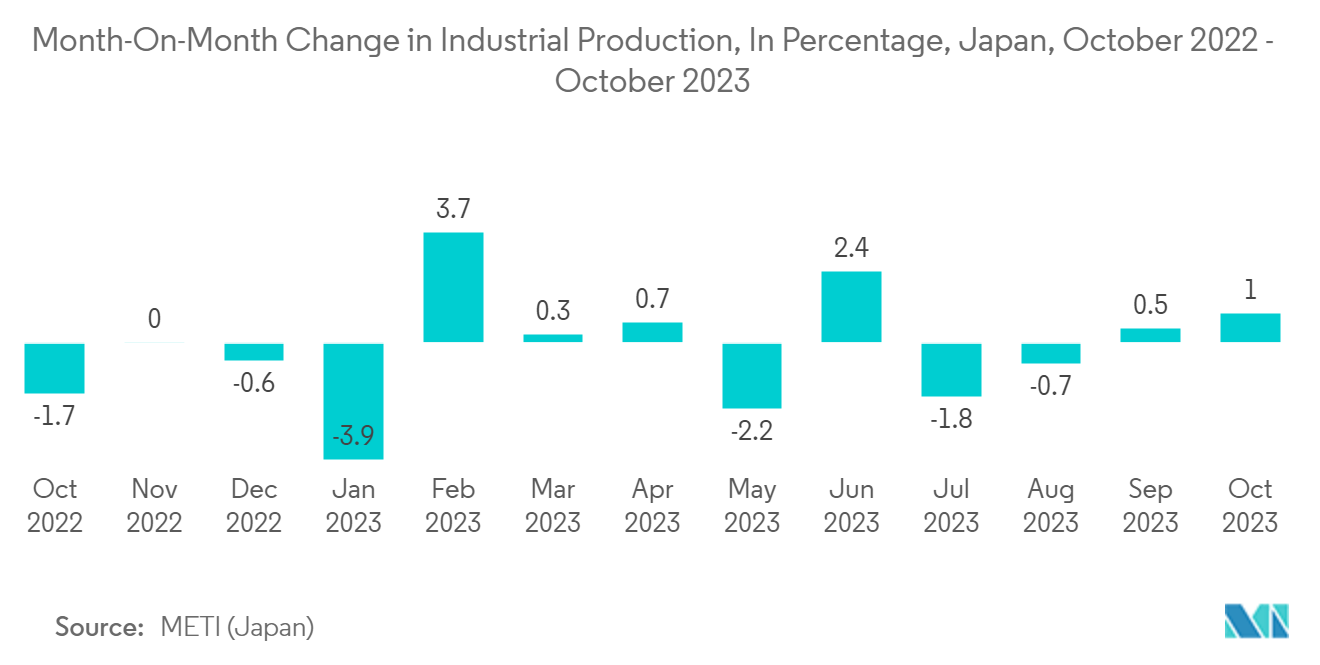Market Trends of Japan Semiconductor Device Industry
Automotive is Expected to Hold Significant Market Share
- Semiconductor chips have become an integral part of modern-day vehicles, owing to their widespread use in various functions of vehicles. Chips used in cars can take many forms ranging from single components containing a single transistor to intricate integrated circuits controlling a complex system.
- For instance, chips are found in the LED light elements of vehicles. Every single diode inside an LED light unit is a chip that emits light. LED headlights alone account for a considerable number of chips in modern-day cars. The headlights also need control units to make them function.
- The growing need for better safety and advanced driver assistance systems (ADAS) in cars has accelerated the demand for semiconductors. Intelligent functions, like backup cameras, adaptive cruise control, blind-spot detection, lane change assist, airbag deployment, and emergency braking systems, are made possible by integrating semiconductor technologies.
- Further, ADAS covers a broad array of sensors, including image and camera sensors for vision-based features, ultrasonic sensors for short-range features like parking assist, and radar and lidar sensors for object detection under dark or foggy conditions.
- In September 2022, onsemi, a provider of intelligent power and sensing technologies, announced a trio of silicon carbide (SiC) based power modules in transfer molded technology that is intended for use in onboard charging and high voltage (HV) DCDC conversion within all types of electric vehicles (xEV). The APM32 series is the first-of-its-kind that adopts SiC technology into a transfer molded package to enhance efficiency and shorten the charge time of xEVs and is specifically designed for high-power 11-22kW onboard chargers (OBC).

Industrial Sector is Expected to Drive the Market
- Industry 4.0 is transforming the way companies manufacture their products. The term Industry 4.0 refers to the smart and connected production systems designed to sense, predict, or interact with the physical world, making real-time decisions that support production. It can increase productivity, energy efficiency, and sustainability in manufacturing.
- One of the essential components of Industry 4.0 is the Industrial Internet of Things (IIoT), which refers to the extension and use of the IoT in industrial sectors and applications. Semiconductors' underlying core capabilities for IIoT include sensing, connectivity, and computing. For instance, in the context of IIoT, sensors are widely used in different industries to monitor equipment, assets, systems, and overall performance.
- Industrial robots require sophisticated sensors that obtain essential information. Sensors can use semiconductor processing units to gather external information like images, infrared light, sound, and internal temperature, moisture, movement, and position data. Today, many industrial robots are equipped with 3D vision systems, which are usually comprised of multiple cameras or one or more laser displacement sensors.
- In June 2022, Analog Devices announced the launch of a high-resolution, industrial quality, indirect Time-of-Flight (iToF) module for 3D depth sensing and vision systems. Enabling cameras and sensors to perceive 3D space in one-megapixel resolution, the new ADTF3175 module is suitable for applications in industrial automation.
- Further, in November 2022, Sony Semiconductor Solutions Corporation announced the launch of a fee-based service on its edge AI sensing platform AITRIOS. The service is designed to streamline developing and implementing sensing solutions using edge devices such as AI cameras. These developments in the market will also drive the studied market in the country.


